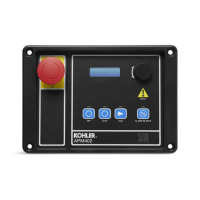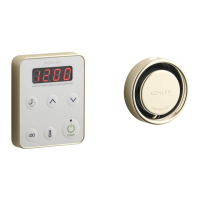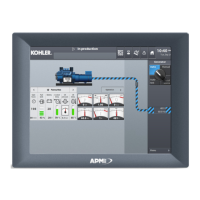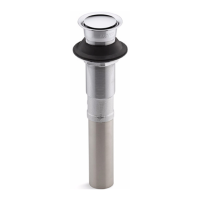6 — COMMISSIONING
Curtis AC F2-A, F4-A, F6-A Motor Controllers – FOS 4.5 – April 2022 Return to TOC
pg. 188
0.6 Adjust the Brake Rate as necessary while reversing the throttle input (i.e., full throttle forward
to low throttle reverse, full throttle forward to full throttle reverse, full throttle reverse to low
throttle forward, etc.). If a brake input is present in the application (Brake Pedal Enable = On)
continue adjusting Brake Rate by applying dierent amounts of brake throttle (i.e., full throttle
forward, then apply full brake or full throttle forward, then apply low brake, etc.).
1 − Speed Mode Tuning
1.1 Set the Pump Enable and Regen Lower Enable parameters to O (do not have the pump turn on
during the traction motor tuning).
1.2 Adjust Max Speed to the maximum speed the motor should turn in the vehicle application; this
speed setting corresponds to an input of full (100%) throttle.
1.3 Adjust the Typical Max Speed to the approximate maximum speed that the motor will spin. is
is usually the same value as the setting for Max Speed, but some applications have a Max_Speed_
SpdM that changes (in the VCL soware). If the Max_Speed_SpdM changes, set the Typical Max
Speed to the highest speed the motor is expected to reach. is value does not need to be set
precisely since it will not change motor performance. Typical Max Speed sets a reference point
for the “rate” parameters (accel, decel, brake rates), so that applications that have a changing
Max_Speed_SpdM will not experience changes in the rates (because the rates are referenced to
the unchanging Typical Max Speed value). Once the Typical Max Speed parameter is set, do not
adjust it further without adjusting all the rate parameters as well.
1.4 Kp typically does not need to be changed as the default value will work well in most applications.
is parameter controls how tightly the actual motor speed will track the requested speed
trajectory (speed trajectory is set by the accel, decel, and brake rates).
If seeking to adjust the Kp (for looser or tighter following of the speed trajectory), follow
these guidelines:
Set the following parameters. Before setting them, make a note of their present (or default)
settings so you can return them to these original values at the end of this procedure.
• In the Speed Mode » Speed Controller menu, set the Max Speed to a low value (≈1000
rpm), as high-speed operation is not needed to observe system response.
• In the Speed Mode » Response menu, set all the accel and decel rates to their fastest values
(0.1 seconds); this allows better observation of the system response.
• Set the So Stop Speed parameter to 0 rpm to disable the so stop speed function (see
Restraint menu).
• In Speed Mode » Restraint » Position Hold menu, set Position Hold Enable = O such that
the position hold function will not interfere with the speed control gain setup procedure.
• If the vehicle has an EM Brake, set the EM Brake Type to 1. is setting releases the EM Brake
as soon as the interlock is closed (Interlock = On). Note: Aer completing the ne tuning, reset
the EM Brake Type to the nal type (see the Application Setup » EM Brake Control menu).
Cycle KSI to clear any faults.
• Using very quick, pulsing throttle movements, increase the throttle and then release it
to 0%. e intent is to give the speed controller torque impulses.
• Increase Kp and repeat the throttle tests. Increase Kp until you start to notice marginal
stability (normally motor bouncing, or continuous oscillation in the gears, is heard).
Note: It is possible that very heavy vehicles will not experience marginal stability even
at the highest setting of Kp.
Quick Links:
Speed Mode p.52
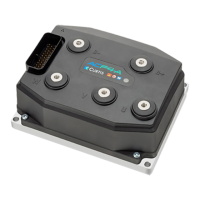
